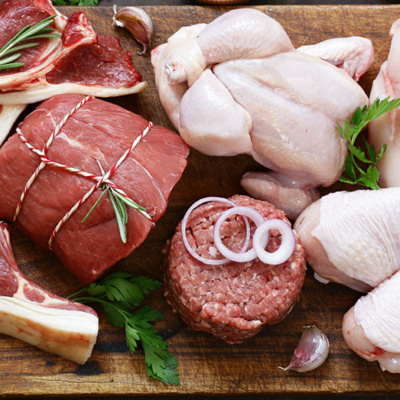top of mind news
- New CDC Guidelines For The Vaccinated Leave Restaurants With Dilemma
- SBA Issues Latest Update on RRF
- The Importance of Traceability in Foodservice
- Restaurant Sales Fully Recovered In April
- Hiring Challenges Persist for Restaurants, but Changes are Coming
Poultry
 Weekly chicken slaughter remains lackluster, with kills for the week ending May 8th coming in at just 163.6 million, up just 0.4% from last year but down 0.5% from 2019 levels. Weekly turkey slaughter remains a concern, as well, with slaughter for the same week down 3% from a year ago while year-to-date throughput is 4.5% less than 2020 levels. Tight chicken production schedules remain supportive of the wholesale markets, with wings continuing to edge higher, further above $3.000 while breast meat prices are, as well, climbing through the lower $2.000 area. Barring increased broiler production, concerns exist regarding higher poultry prices into early-June. Plus, chicken hatchery data continues to suggest price increases may still be likely this summer.
Weekly chicken slaughter remains lackluster, with kills for the week ending May 8th coming in at just 163.6 million, up just 0.4% from last year but down 0.5% from 2019 levels. Weekly turkey slaughter remains a concern, as well, with slaughter for the same week down 3% from a year ago while year-to-date throughput is 4.5% less than 2020 levels. Tight chicken production schedules remain supportive of the wholesale markets, with wings continuing to edge higher, further above $3.000 while breast meat prices are, as well, climbing through the lower $2.000 area. Barring increased broiler production, concerns exist regarding higher poultry prices into early-June. Plus, chicken hatchery data continues to suggest price increases may still be likely this summer.
Beef
Last week’s slaughter pace continued to ease, with the 638,000 head harvest being down 1.7% (w/w) which is a counter seasonal move lower from April into early May. The tighter production schedules during the past couple of weeks continues to support the beef complex, with the Choice cutout holding above $3.00 throughout last week. While Friday’s daily Choice cutout did show some modest weakness, do not anticipate the lower pricing to prevail at least for now. Still, look for an eventual price top to occur but demand remains robust as restocking is strong. And retail buying activity is preparing for an active grilling season.
Pork
Last week’s hog harvest fell below 2.4 million head, the first non-holiday or COVID disrupted weekly break below 2.4 million head since August 2019. The USDA pork cutout value remains well supported, but the ham primal has begun to decline with weakness across the weighted hams cuts. The trouble areas however are bellies and 42 and 72 trimmings, which have started to head higher again, which is seasonally normal. Even with pork prices well above the long-term averages, relief is likely going to be small as slaughter seasonally fades in June.
THE SEA
Seafood
The snow crab markets continue to trade near record high levels albeit down from earlier this year. U.S. snow crab imports during March were 57% bigger than the previous year. But it took very expensive price levels to encourage those imports. The Canadian snow crab fishing season is progressing with production likely to be up near 30% from the prior year. The upside may be limited in snow crab prices.
THE GARDEN
Produce
The Idaho potato markets mostly continue to firm which is not unusual for this time of the year. The 70 count Idaho russet potato market is trading at its most expensive levels since September. History suggests that further price increases can be anticipated during the next several months. The five-year average move for the 70 count Idaho russet potato market during the next 12 weeks is an increase of 32%. The avocado markets have firmed during the last week and, like potatoes, further price increases are anticipated.
THE KITCHEN SINK
Dairy
Saturday slaughter continues to salvage lackluster intraweek totals, with last week’s 68k head Saturday bumping the week-to-date total to a modest 640k head (weekly total). Last week’s throughput was 4% smaller than 2019 which remains counter seasonally smaller than slaughter rates noted in early April. While the beef cutouts continue to head higher, late last week beef trade started to show some weakness, with the Select cutout falling for two consecutive days. More beef price increases may occur but nearing a seasonal peak is typical. But with lackluster cattle slaughter, this year’s beef price declines may be only modest.
Grains
The USDA released their first 2021-22 corn and soybean crop and supply estimates last week. These are the feed supplies that will carry us from this fall into the summer of 2022. Despite strong yields and plantings, the USDA still expects fairly tight feed supplies to persist. This could limit any downside in grain prices this summer.
Oil
Nearby RBOB gasoline futures last week were up (w/w) and traded to the highest level in two years. Security concerns over the recent pipeline problems of gasoline and expectations of rising driving activity this summer should keep gas prices firm.













